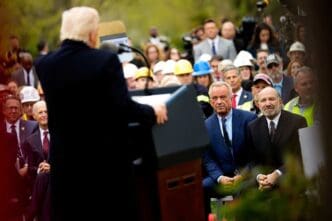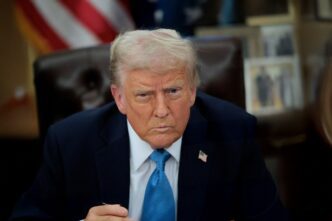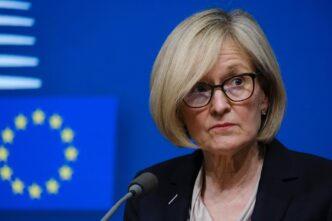The global landscape is undergoing significant shifts as nations reassess their alliances and strategies in light of recent developments. The return of Donald Trump to the White House has prompted countries to reconsider their positions, particularly in relation to his aggressive trade policies. Trump’s sweeping tariffs have caused considerable concern among governments, threatening the stability of long-established trade flows and supply chains.
For the European Union, a region heavily reliant on exports and a staunch supporter of free markets, these tariffs have posed a serious challenge. Despite some policy reversals, the EU continues to face tariffs, including a 10% baseline rate and a 25% levy on steel, aluminum, and cars. The potential for increased duties on foreign pharmaceuticals adds to the uncertainty. With transatlantic relations strained and the American market becoming less accessible, the EU is exploring alternative economic partnerships to mitigate these disruptions.
China has emerged as a potential partner for Europe, offering new avenues for business and investment. The country’s growing middle class presents lucrative opportunities for European companies seeking to expand their customer base and secure fresh investments. In 2023, the United States was the leading destination for EU exports, followed by China. However, China was the largest source of imports into the EU, highlighting its significant role in the bloc’s trade dynamics.
Following Trump’s announcement of “reciprocal tariffs,” European Commission President Ursula von der Leyen engaged in discussions with Chinese Premier Li Qiang. Both leaders emphasized the importance of supporting a strong, reformed trading system. China expressed readiness to enhance relations with the EU, signaling a potential diplomatic thaw.
Spanish Prime Minister Pedro Sánchez’s visit to Beijing further underscored the potential for collaboration. Sánchez described China as an essential partner in addressing contemporary challenges and advocated for balanced relations between the EU and China. Meanwhile, the EU and China are revisiting the idea of “price undertakings” to resolve disputes over China-made electric vehicles.
However, recent developments have added complexity to this evolving relationship. Ukrainian President Volodymyr Zelenskyy reported the capture of Chinese citizens fighting alongside Russia in Ukraine, raising questions about China’s role in the conflict. While the Chinese government denied involvement, these revelations have dampened the momentum for rapprochement.
The EU remains concerned about China’s close ties with Russia and its perceived role in enabling the conflict. Other points of tension include China’s export practices, state subsidies, market access restrictions, and human rights issues. Despite some calls for resetting relations, skepticism persists among EU member states.
The Evolving Landscape
The shifting dynamics between the EU, China, and the United States have significant implications for global trade and geopolitics. The EU’s exploration of partnerships with China reflects a pragmatic approach to navigating the challenges posed by Trump’s policies. For European businesses, this could mean new opportunities in the Chinese market, potentially offsetting losses from reduced access to the US market. However, the complexities of EU-China relations, including geopolitical tensions and divergent values, present ongoing challenges.
For ordinary citizens and businesses, these developments may impact various aspects of daily life, from the availability of goods and services to job opportunities and economic stability. As global trade patterns evolve, consumers may experience changes in product prices and availability. Additionally, the broader geopolitical context could influence public sentiment and policy decisions, shaping the future of international relations and economic cooperation.







